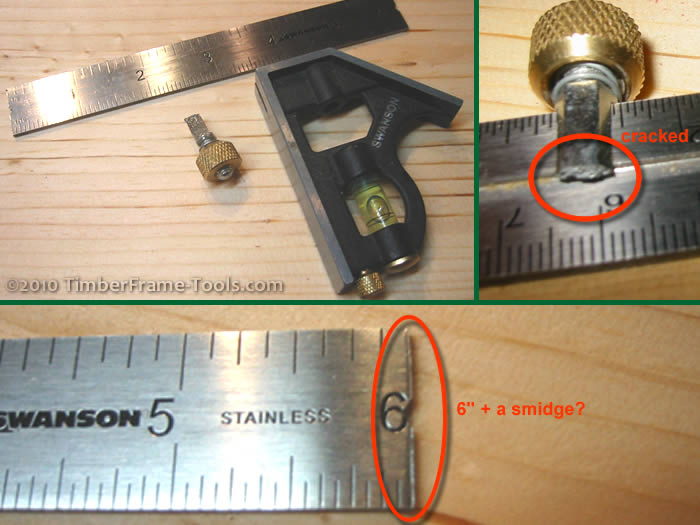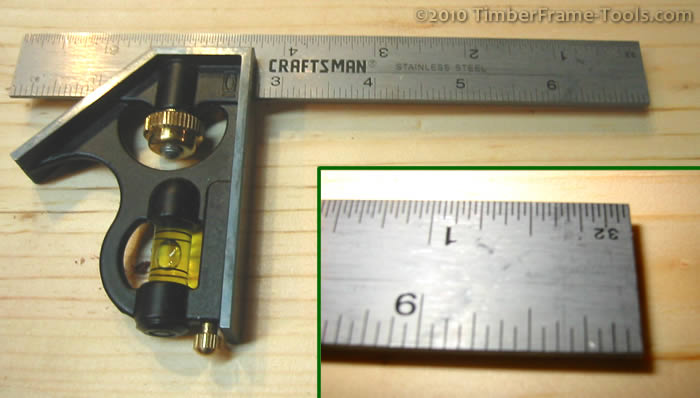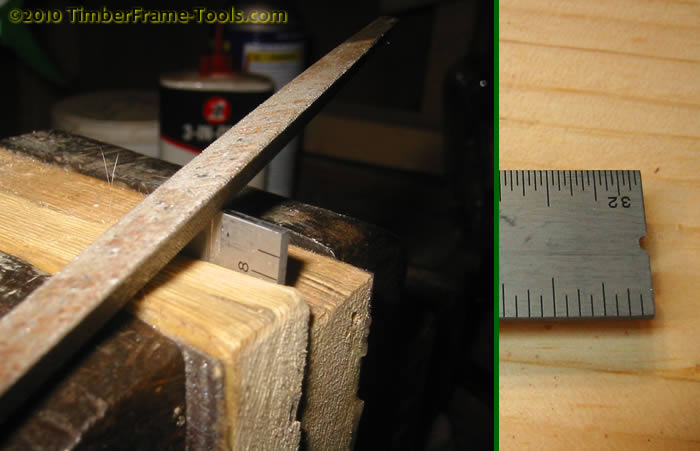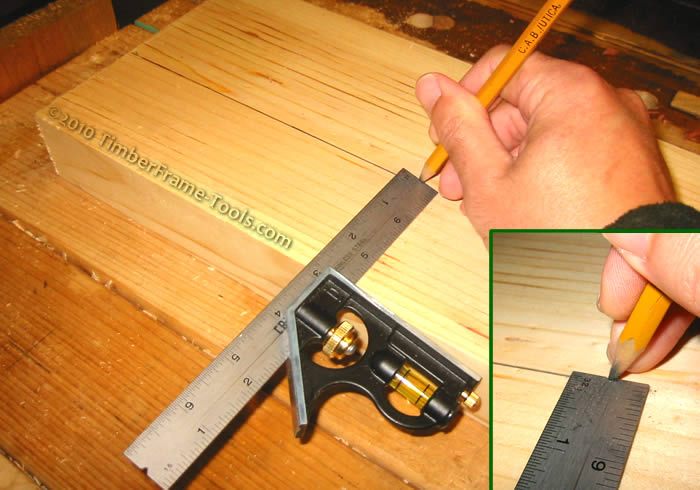I like combination squares. They are handy and I use them all the time. I know that Starrett combination squares are the hands-down favorite, but I just can’t justify the expense. I had an inexpensive Swanson that I picked up at Lowes for keeping in my toolbelt for measuring mortise depths and other things while working on my timber frame. It had issues. The ends of the ruler were not ground square (so not accurate), the locking nut, even when twisted down tight would not always prevent the ruler from sliding and losing its setting (grrr). I can’t say I was disappointed when I tightened it one day and then watched the ruler fall completely out. The post that secures the ruler in place broke (maybe if I didn’t have to tighten it so hard to get it to hold a setting, it wouldn’t have broken).

Wouldn't hold a setting, poorly ground, and eventually broke from trying to tighten the locking bolt enough for it to hold the ruler in place.
I was happy to have a reason to replace it. I went to Sears and bought the Craftsman 7″ combination square. This square is much more precisely ground and seems to hold a setting without having to crank down too hard on the locking nut. I’m not sure if I like that it is 7″ instead of 6″, but so far it doesn’t seem to make a difference. The lifetime warranty on it is an added plus.

This square is more precisely ground. The matte finish on the ruler makes it easier to see, especially when outside on a sunny day. You can also write on it with a pencil and then erase it. It is hard to tell in this photo, but the lines on the ruler are etched, not printed.
Something was missing though. It needed a “V” groove for the pencil. I often use a combination square as a marking gauge. However, without a little notch for the pencil tip, it is a little harder to make accurate marks. By using a saw file, I quickly cut a notch in each end of the ruler. The notch need only be half the thickness of the pencil lead you typically use. If you use a mechanical pencil, the notch can be smaller.

By rotating the swa file slightly as it cuts you can turn the v notch into a u notch if you prefer.
Laying out a line is as simple as holding the pencil in the notch then sliding the combination square along the side of your wood.

Sliding the combination square along the edge of the wood, brings the pencil along with it.
I have done the same thing to my 12″ and 16″ Combination Squares. (I have all three Craftsman sizes for less than one Starrett and they are guaranteed for life, which the Starretts are not.)